Hello everyone,
Here we go with the first post of Q2, 2013………
CHARTING OWN COURSE
In a highly symbolic show of unity in Durban in late March; leaders of Brazil, Russia, India, China, South Africa (collectively referred to as the BRICS) agreed to create a development bank to create funding for infrastructure projects in a potentially historic challenge to western-dominated financial institutions [The Guardian]. While various technical details need to be hammered out, the BRICS bank could potentially rival the World Bank. Other developing countries are eventually expected to be invited to join the bank. Per a recent column in the Business Standard, ” the richest nations can stew about this turn of events, as those on the periphery of the world economic system start seeing themselves as the core. Or developed countries can look in the mirror, and consider how their actions have helped accelerate the shift.”
The concept may be considered outlandish and fraught with consensus on minute details that have yet to be discussed…..but the seed has been sown. Lets wait and watch as to how it slowly fructifies.
TAPERING OFF ?
The International Monetary Fund [IMF] has jumped into the climate change debate and globally, is against government energy subsidies. Its latest report calls for an end to energy subsidies across the board (about $1.9 trillion annually around the world) OR for these subsidies to be offset with taxes that could pay for expensive social programs [Oil and Energy Insider]. Essentially, the IMF is subscribing to the idea of a “sin tax” on fossil fuels to reduce consumption and raise money for other sectors.
Coming at a time when many nations are toying with the idea of a gradual cutback in subsidies in the coming years, the IMF’s school of thought should not be surprising.
NOD TO COMPOSITES
Admittedly, the building and construction sector has had a conservative approach in use of composites over the years. The American Composites Manufacturers Association [ACMA] actively initiated work several years back to modify the International Building Code in an effort to create greater awareness on environmental sustainability of composites. This culminated in the International Code Council [ICC] voting in 2009 to allow use of composite materials for both interior and exterior wall applications as reflected in the code’s latest edition : IBC, Chapter 26,” Plastic ” and Sub-section 12 ,” Fiber reinforced Polymer” [Composites World]. While Europeans rely on the Eurocode; in the Middle East and Asia, codes tend to be a mix of U.S. and British standards. The fact that designers are beginning to actively interact with architects at the drawing board stage itself to highlight the advantages of composites in reducing building dead load/smaller foundation & manageable seismic design and the resulting favorable life-cycle analyses; are definite pointers to the growing acceptance of composites, albeit slowly [Reinforced Plastics].
Just goes to prove that architects’ minds need not necessarily be set like concrete… with the right approach, they can be flexible.
UPPING THE ANTE
The addition of liquid epoxidized natural rubber to epoxy resin matrix in an E-glass fiber reinforced composites threw up interesting results on the resultant mechanical properties at varying glass fiber loadings. It was observed that the presence of liquid epoxidized natural rubber improved the flexural strength & modulus, tensile strength & Young’s modulus and impact strength (up to a certain % loading of glass fiber by weight) due to the plasticizing effect of the rubber particles in the matrix. Thermogravimetric analysis (TGA) revealed the thermal stability of the composites, while the scanning electron microscopy(SEM) revealed a heterogeneous dispersed phase of morphology. Adhesion was reported to be poor if untreated glass fiber was used, which is to be expected [Sciencia].
Would multiaxial fabrics have been a runaway success without German machines of the likes of LIBA and Karl Mayer ? An university in Dresden, Germany [TU Dresden] has partnered Karl Mayer to produce concrete reinforcement from carbon fiber heavy tows using a specially modified multiaxial warp knitting machine. Each heavy tow consisting of 50,000 individual filaments (50K) can reportedly reduce material costs for a higher fiber volume fraction in each textile concrete-reinforcing layer; representing a considerable economic advantage over alkali-resistant glass fibers and conventional CF with 12,000 individual filaments (12K) that are currently used for maintaining and restoring buildings [Innovation in Textiles]. The key lay in delivering the heavy CF tows in the main reinforcing warp direction without damage and with precise positioning of the fibers through gentle warp yarn brakes and combined warp yarn/holding down sinkers for placing the warp yarns accurately between the needles. The warp yarns were fixed without being pierced and the weft yarns were fixed in a reduced width during the warp knitting process. Both yarn systems lie completely parallel and stretched in the reinforcing textiles, thereby causing a positive effect on the strain characteristics. Mechanical properties were improved by integrating online coating and drying process. Machine running speeds of up to 560 rpm were achieved thereby meeting productivity requirements.
When it comes to sturdy machinery innovation; the Germans have few peers, with no perceived slight on other nations.
JOINING THE BANDWAGON
Clean wind power is becoming infectious, with Japan announcing ambitious plans that are not idle rhetoric. Japan aims to triple its supply capacity to 7.5 GW by developing transmission grids in Hokkaido and Tohoku regions. Wind power generation costs are estimated at 10 yen/KWh – almost the same as thermal power generation by liquefied natural gas [Asiaone]. In addition, tapping the wind potential in other regions such as Hokuriku, Sanin and Kyushu regions could increase the nation’s capacity to 14.7 GW….which is a six-fold increase over current levels. The Japanese have the enviable reputation of walking the talk….the wind energy sector should take their plans seriously [Renewable Energy World].
Germany’s path-breaking clean energy transition has resulted in onshore wind power (30+GW) generating nearly 40% of the country’s electricity production, roughly equal to 40 nuclear reactors. According to the Department of Climate and Energy Change, U.K.’s offshore wind power rose to 7.5 TWh in 2012, up from 5.1 TWh in 2011 and driven mainly by capacity addition [Bloomberg].
The wind energy sector definitely appears to be on a tear in many countries in spite of several Governments keeping the industry on tenterhooks till the last minute when it comes to extension of tax credits (aka, incentives) – India being the latest example. The battle for supremacy seems to be more related to onshore vs. offshore.
PLASTICS TO THE FORE
Daimler is installing the world’s first plastic engine support for a six-cylinder diesel engine (in the new GL class) in lieu of aluminum resulting in improved acoustical properties, better thermal insulating characteristics, higher load bearing capacity and a 30% weight reduction. The part, which supports the engine with the aid of mounts is injection molded from a highly reinforced specialty polyamide. Engine supports are crucial as they have to support both the permanent load (engine’s weight) whilst simultaneously absorbing the engine’s torque and high bending moment + low tendency to creep [Plastics Today]. The plastic part also passed the repair crash (that replicates smaller crashes) and the massive offset crash (head-on crash) with flying colors.
A dent to aluminum ?
LOWERING CYCLE TIME
A reduction in molding time of a large component by a factor of 10 ? Welcome to ESTRIM (Epoxy Structural Reaction Injection Molding) – a new process that takes advantage of new fast reacting epoxy formulations targeting lightweight structural automotive parts and sports applications [Molding blog]. Cycle times for large parts have a drastic reduction from 30 minutes for conventional RTM to 3 minutes with ESTRIM. The system includes a series of integrated products – carbon fiber reinforcement handling systems, dedicated preformers, high-pressure dosing units for epoxies, multi-component mixing heads with different injection and distribution methods, polymerization presses and relevant handling systems of preforms and molded parts. The icing on the cake…… ability to incorporate recycled carbon fiber from aerospace and other applications.
PARADIGM SHIFTS
Per European Plastics News, the pipe segment will be the principal growth driver for HDPE through 2019, riding on strong demand from Asia Pacific (growth rate of 4.4%). Eastern Europe, Middle East and South America will also generate strong growth rates for HDPE; while North America and Western Europe will witness slower growth rate [Plastics News].
In spite of higher costs being seen in PP, global growth rates are expected to increase from under 4% in 2007-12 to ~5% in 2012-17. Though the growth in North America is expected to remain low, the region could add new PP capacity towards the end of the 2012-17 period through the propane dehydrogenation route. Thanks to shale gas, at least six world-scale ethylene crackers are planned for North America that could boost ethylene capacity by around 33% resulting in exports as PE supply would exceed demand in the region.
The extent of impact created by the shale gas revolution in the U.S has caught even industry experts by surprise.
A new acrylic thermoplastic resin that can be processed on thermoset equipment for RTM and infusion, coupled with the ability to be reinforced with continuous glass or carbon fibers has been recently introduced. Cycle times and mechanical properties are similar to those for conventional thermosets such as unsaturated polyester, vinyl ester and epoxy resins. The thermoplastic structures are suited to thermoforming, welding and recycling. Parts consolidation through use of adhesives reportedly enhances mechanical strength. The resin is styrene-free and can be used with peroxide initiators. The traditional gel coat layer (used in thermoset parts) can be dispensed with and is replaced with a thermoplastic multi-layer sheet such as ABS/acrylic which is thermoformed in the mold prior to laying the reinforcing fabric [Plastics News].
NA – MAKING THE DIFFERENCE
Designers realize the significance of bending rigidity of laminated fabrics (glass/carbon/aramid) and its relevance to the position of the neutral axis, especially in load bearing applications. In a recent study, theoretically derived equations were proposed to obtain the position of the neutral axis and to predict bending rigidity of laminated fabrics. Tensile properties, bending rigidities and thicknesses of samples were measured and used to investigate the validity of the theory. The positions of the neutral axes for the face fabrics were obtained and they were not close to the centroid of the fabric. The calculated bending rigidities of laminated fabrics using the obtained positions of neutral axes were found to be more in line with the experimental ones than the results by the method without considering the position of neutral axis. The conclusion was that the bending rigidity of a laminated fabric can be predicted more precisely when considering the position of neutral axis [Sciencia].
TALL, TALLER…
In late February, the world’s tallest hotel [JW Marriott Marquis] opened its doors to the public at Dubai. Soaring at 355 meters, the building is just 26 meters shorter than New York City’s famous Empire State Building and boasts of 7,500 square meters of indoor and outdoor event space [Gulf News].
A French architect is hoping to build the Middle East’s first skyscraper covered in trees and pot plants in Dubai. Dubbed the “Flower Tower “, the concept would create the impression that residents are surrounded by forest – bringing greenery (on its facade) to apartments tens of meters from the ground. Dubai is aiming to cover one-quarter of the emirate – 38,000 hectares – in green space by 2025 [Arabian Business].
When it comes to buildings, Dubai sets its own standards of excellence (and records) and goes about achieving the same sans fanfare. Recall the Burj Khalifa ?
Speaking of hotels, its turning out to being a game of one-upmanship with China announcing designing of the Lotus Hotel….. a hotel that floats on sand ! Hidden in the Gobi desert, the green hotel of the future does away with bricks and concrete and, instead, will use materials and techniques to support low carbon construction. An ingenious skeleton distributes the hotel’s weight through its walls, rather than directly on to its floors; while, underneath, a system of containers allows the sand to move under and around the hotel while it stays in a relatively fixed position [Clean Technica].
Allowing imagination to run riot ?
This blog’s readership has now reached the milestone of 100 countries spanning all continents.
Its a small world, eh ?
Till the next post,
Cheers,
Email: SS@essjaycomposites.com
Twitter: @essjaycomposite
Website: www.essjaycomposites.com

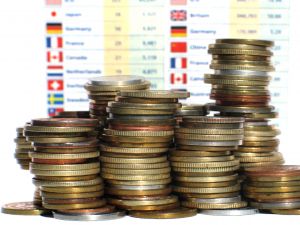

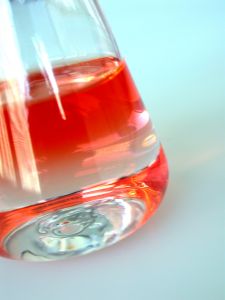
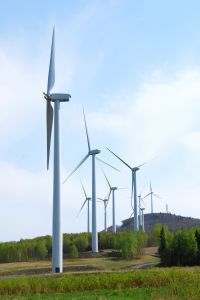
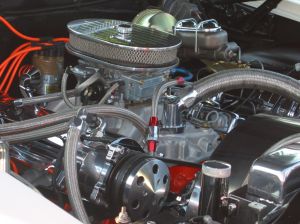

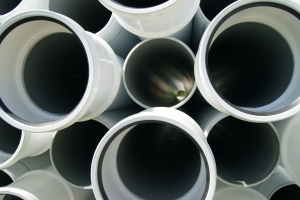
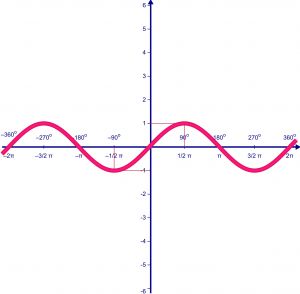
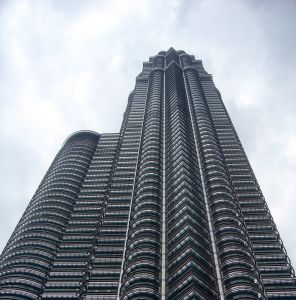
You must be logged in to post a comment.